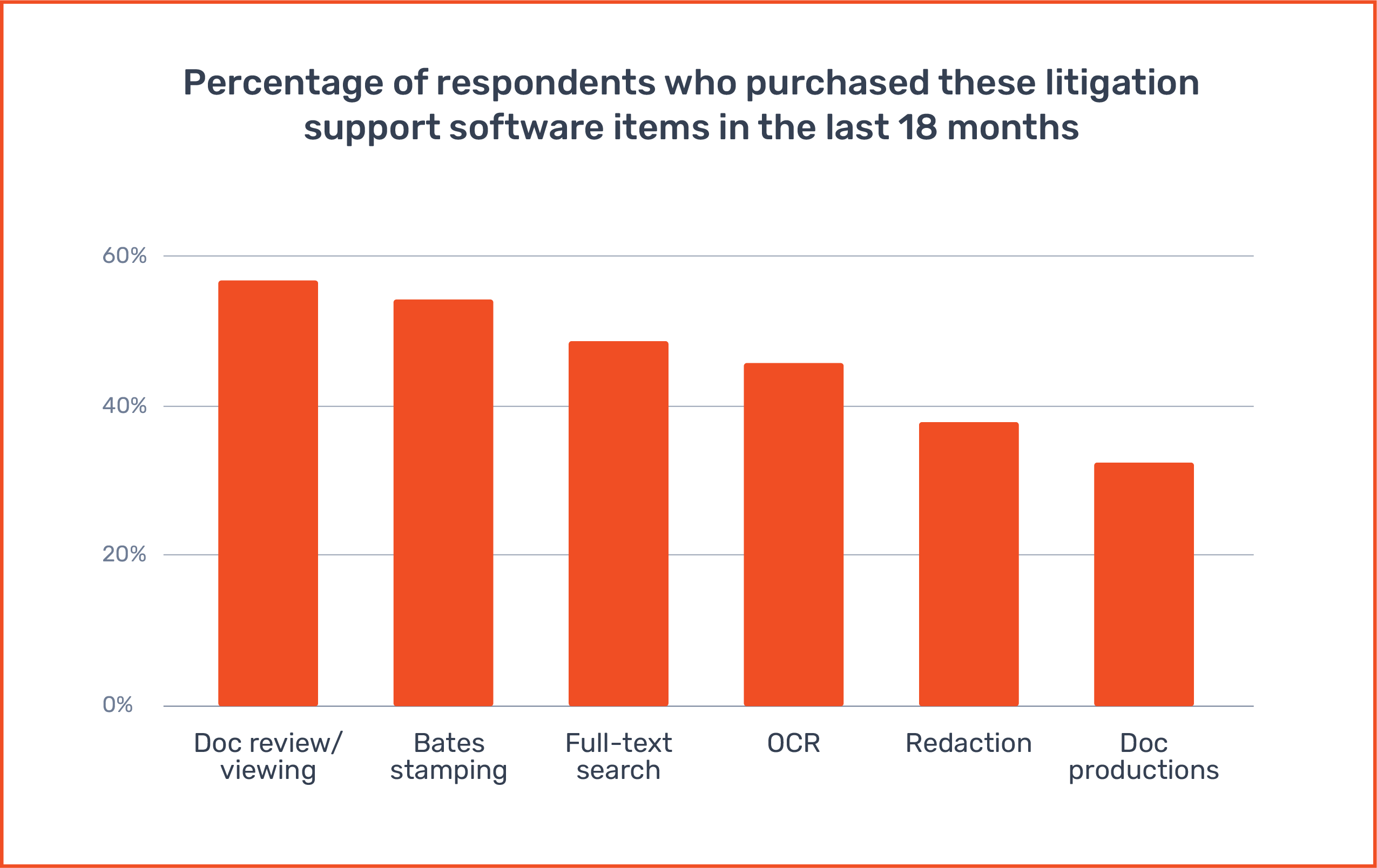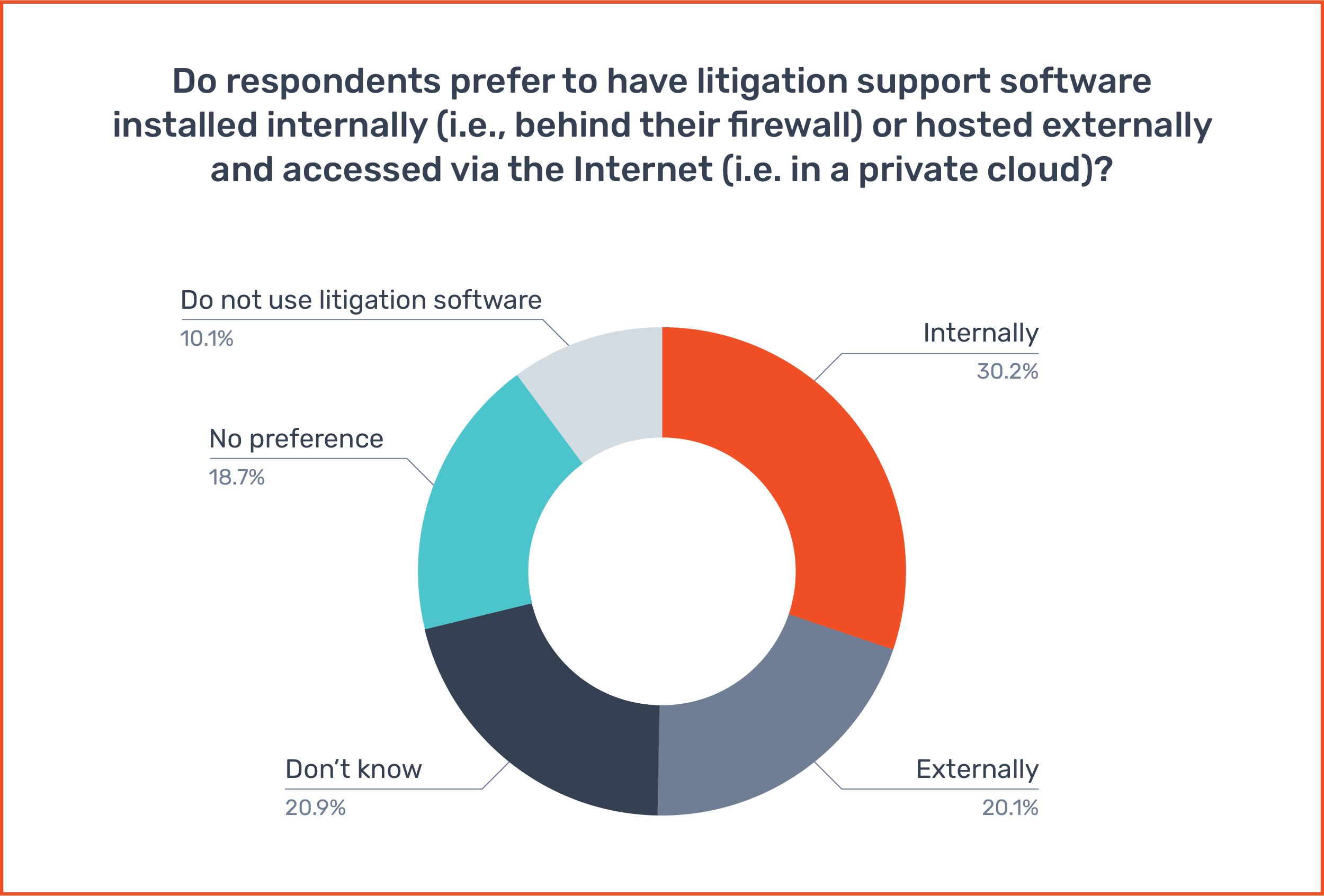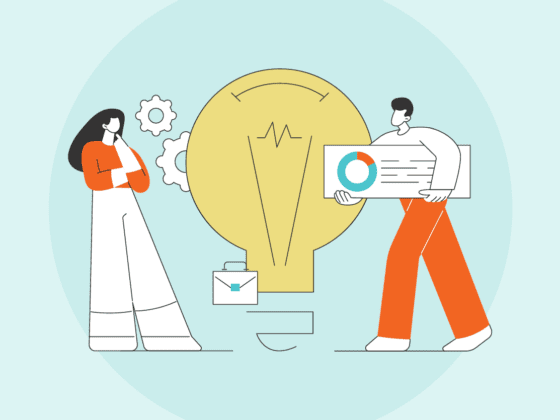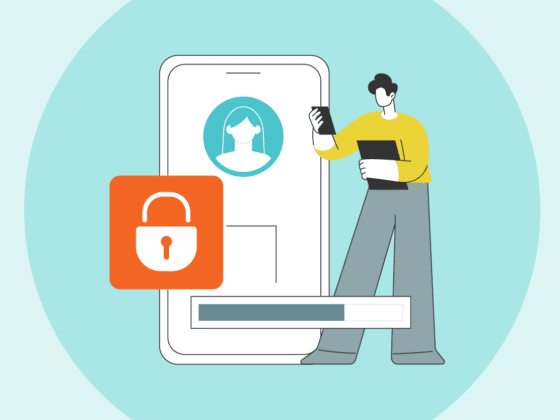The 2022 ABA Legal Technology Survey Report measures current legal technology trends. How does your firm compare to the rest?
Lawyers are rarely accused of rushing into change, but current legal technology trends show a few glimmers of hope that (slowly but surely) law firms are realizing the significance of incorporating technology into their litigation practice to remain relevant and competitive. The 2022 ABA Legal Technology Survey Report: Vol. 5 – Litigation Technology & E-Discovery reveals that law firms went through a belt-tightening phase in 2020 & 2021 but then made investments in 2022 to improve their litigation offerings.
Smaller Firms Focused on More Litigation
If you practice at a “small” or “mid-size” firm then you’re in good company according to the Technology Survey Report. A full 76% of the respondents practiced at firms with less than 99 attorneys, with the largest group (32%) in firms with between 2-9 attorneys and the next largest segment (25%) covered 10-49 attorney firms. Almost half (46%) of these attorneys identified themselves as “primarily litigation.”
All of this works out wonderfully for customers of the Nextpoint ediscovery software platform because we devote a lot of resources to supporting smaller law firms that do not have a full-time litigation support department. If you’re a lawyer in one of these firms, you need to spend your time on “legal things” instead of worrying about cyber security, data processing, and the logistics of trial presentation. With our team of ediscovery and litigation experts, we can take care of all that for you.
Software for Litigation & Ediscovery
The ABA Legal Technology Survey Report explored legal technology trends in three primary types of litigation software: 1) litigation support software, 2) deposition/transcript management software, and 3) trial presentation software.
Apparently, respondents to the survey interpreted “litigation support software” to be synonymous with “ediscovery software,” since the majority of the purchases in this area were made for “document review/viewing” (56.8%), Bates stamping (54.1%), full-text search (48.6%), OCR (46%), redaction (37.8%), generating document productions (32.4%), and annotation (24.3%).

When asked what features of litigation support/ediscovery software were most useful to litigation teams, the two top responses were for 1) full-text search and 2) document review, which is going to be difficult to procure if you’re not using a dedicated ediscovery platform like Nextpoint. Those firms who still insist on manually printing out documents for review are struggling unnecessarily and falling behind in the competitive landscape.
Where Should Data Be Stored?
Interestingly, 30% of survey respondents said that they would prefer to have software installed internally behind a firewall, while only 20% prefer software that is hosted externally and accessed through the internet, such as a private cloud.
While there are a small number of scenarios and clients that demand local installations with limited access requirements, the most acceptable and secure option for the vast majority of firms today is a cloud-based ediscovery platform. In fact, most cloud-based software providers have extensive security measures that would be impossible to enact with an on-premise solution.
Just make sure you ask the right questions to understand the security and protections that your cloud-based provider has in place. (Check out our eGuide on managing ediscovery in the cloud for tips.)

What Type of Ediscovery Software Do Attorneys Prefer?
The lawyers who have worked on cases involving ESI were asked about their ediscovery software preferences, and a whopping 38% said that they don’t use an ediscovery review solution. Unsurprisingly, this percentage decreases as the size of the firm increases, meaning that many smaller and solo firms are working with electronic data without the right tools and software.
For those lawyers who do use ediscovery review software, the most popular choice was an “all-in-one solution”, which was described as “including sophisticated tools to assist in your processing, production, analytics, and review.” These solutions work well for cases and firms of all sizes, and for both experienced technical experts and those beginning to make the switch to specialized ediscovery software.
The Nextpoint ediscovery software platform has been designed to cover all aspects of document review (processing, analysis, review, production) and much more beyond that. Customers use Nextpoint for large, complex cases as well as “simple” review projects, and the key factor is that Nextpoint provides a secure, dependable, and consistent repository for hosting all of the documents related to a matter.
How often do you need to use ediscovery software? Well, because every litigation matter today involves electronically stored information (ESI), you should be using ediscovery software in every litigation matter! Discovery is ediscovery. If you’re still manually reading through discovery documents, you are falling behind the acceptable level of responsibility in today’s litigation landscape.
Most attorneys prefer an all-in-one ediscovery solution that offers tools for processing, production, analytics, and review.
Legal Technology Trends: Searching in Ediscovery Software
What tasks are litigators performing in ediscovery software? Perhaps not surprisingly, the “search term” is still the primary technique used to process and review ESI, as 80.6% of respondents confirmed it is their preferred method for reviewing data and even performing early case assessment (51.9% of respondents stated they used keyword searches for ECA).
A close second was “natural language search” at 66.7%, which many platforms provide as their default search method. Next, “concept searching” and “AI-assisted search” both came in at 28%, and “predictive coding” held the bottom at 19.2%. In those scant cases where predictive coding was used, the handful of respondents stated it was for “document prioritization” (89.3%), and it was only used because they had a “short time frame” – in other words, it was not their first choice. Seventy-three percent of respondents stated they were completely unfamiliar with predictive coding.
Predictive coding, also known as TAR or Technology Assisted Review, was once heralded as the revolutionary technology that would transform ediscovery practices. Of course, technology is a tremendous and necessary tool in modern litigation, but sometimes, the tried and true methods, like a classic keyword search, will prevail.
The classic keyword search remains the most popular way for legal teams to organize and review ESI.
Searching, Supervising, and Summarizing Transcripts
Only one question in the survey asked if deposition/transcript management software was available at the law firm, and only 34% answered in the affirmative. That’s a bit surprising, since not every litigation matter will go to trial, but almost every matter will have a need to manage and summarize transcripts from hearings or depositions. It’s unfortunate that more firms are not offering this critical piece of the litigation software pie, but perhaps it’s because there aren’t many useful offerings on the market today for managing depositions.
The Nextpoint platform has always included tools for managing, searching, and organizing transcripts because we believe it’s such an important component of a comprehensive litigation management package. Nextpoint provides a single repository where all deposition transcripts can be uploaded, organized and accessed by the entire litigation team. All of the transcripts can be searched, designations and reports can be generated, and exhibits can be linked to the text.
Only 34% of attorneys have access to deposition transcript management software. A software solution like Nextpoint that combines ediscovery with trial prep will ensure you have all the tools you need in one place.
Trial Presentation Proficiency
When asked “Do you practice in a courtroom?” 66% of respondents answered “Yes,” with an average of 23 courtroom appearances per year. The overwhelming choice for trial presentation software appears to be Microsoft PowerPoint (81.4%), but that choice might be attributable to the fact that PowerPoint is always associated with presentations. While Microsoft PowerPoint is excellent for clicking through linear presentations (e.g. next slide, next slide, etc.), the software doesn’t allow you to jump to different documents easily, or zoom into important sections for emphasis.
Over 20 years ago, Nextpoint began its cloud-based journey by offering a simple and easy-to-access trial presentation tool that allowed users to quickly create a “callout” on a document, highlight text, and use drawing tools to focus the audience’s attention. Those tools are baked into the suite of litigation software.
The ABA Legal Technology Survey also asked who was primarily responsible for operating courtroom technology during court appearances. The largest segment (30.5%) stated that the attorneys themselves were the primary operators, but 10% of the time it was “another attorney from their firm,” a paralegal (9%), or a “litigation support consultant” (8%).
If an attorney is completely comfortable with juggling both the substantive arguments in a hearing along with the technical logistics of presenting information, then a platform like Nextpoint is a perfect tool. But since we at Nextpoint have been supporting trials for over two decades, we also know there are times when you need a professional, reliable “hot-seater” that can handle all the technical logistics from setup to presentation to takedown. Our trial services team can even help you devise the most effective way to present information to your audience and develop the most effective demonstrative exhibits or plans.
How Does Your Firm Stack Up?
This look into the 2022 ABA Legal Technology Survey Report: Vol. 5 – Litigation Technology & E-Discovery should provide you with a good idea of how law firms are implementing the critical software for managing litigation matters. Where does your firm stand in the litigation technology landscape?
If you’re in the camp that practices ediscovery without any specialized software, it may be time to adopt a comprehensive ediscovery software solution. Legal data volumes are rapidly growing, and it’s better to incorporate software into your practice before you end up with a case that is simply unmanageable without specialized tools.
Keep Up With Legal Technology Trends
Nextpoint is a comprehensive, all-in-one ediscovery and litigation software solution. Our software will carry you from Early Case Assessment to document review to trial prep and presentation. Click the button below to schedule a demo and learn how better legal tech can improve your practice.







